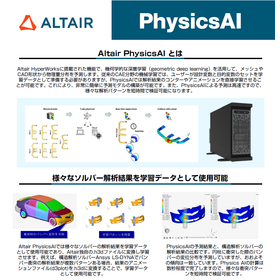Using the analysis module "PHOTO-WAVEjω"! The scattering matrix was obtained from the analysis results.
We conducted an analysis using the finite element method to determine the distribution of electromagnetic waves input from each port in a T-shaped waveguide used for signal processing in radar and other applications. Three ports were set up on an E-plane T-junction waveguide. Due to symmetry, a 1/2 model was created, with natural boundary conditions on the XY plane and symmetric boundary conditions on the other sides. As a result, the absolute values of S31 and S13 calculated were 0.644 and 0.631, respectively, with an error of 2.0%. [Case Summary] ■ Analysis Module: PHOTO-WAVEjω ■ Analysis Results - The absolute values of S31 and S13 calculated were 0.644 and 0.631, respectively, with an error of 2.0%. *For more details, please refer to the related links or feel free to contact us.
Inquire About This Product
basic information
【Analysis Conditions】 ■ Set three ports on the E-plane T-junction waveguide ■ Set impedance boundary conditions on the port surfaces ■ Due to symmetry, create a 1/2 model, so natural boundaries are on the XY plane, and symmetry boundary conditions are applied to the other sides ■ The input waveform is in TE10 mode *For more details, please refer to the related links or feel free to contact us.
Price range
Delivery Time
Applications/Examples of results
For more details, please refer to the related links or feel free to contact us.
Company information
At Photon, we are developing "electromagnetic field analysis software" that models and simulates products and components utilizing electromagnetic phenomena on a computer. In traditional design and development environments, the process has primarily revolved around trial and error through prototyping based on the experience of engineers and experiments with prototypes. However, conducting experiments using actual prototypes and analyzing the results requires significant time and cost. Moving forward, transitioning from an experimental and prototyping-based approach to an analysis-based design approach will be a crucial challenge for improving productivity, and establishing simulation technology as the core of analysis-based design techniques will be essential. In this context, Photon is developing and providing "analysis software" focusing on electromagnetic fields, as well as heat, vibration, and sound fields. By utilizing Photon's software, efficient development and design of various industrial products can be achieved. In this way, Photon aims to support users in reducing the number of prototypes, lowering development costs, and shortening development periods in their manufacturing environments, ultimately enhancing their competitiveness.










![SOLIDWORKS 2026 New Features Seminar [Free Participation]](https://image.mono.ipros.com/public/default/object/noimage_l.gif?w=280&h=280)